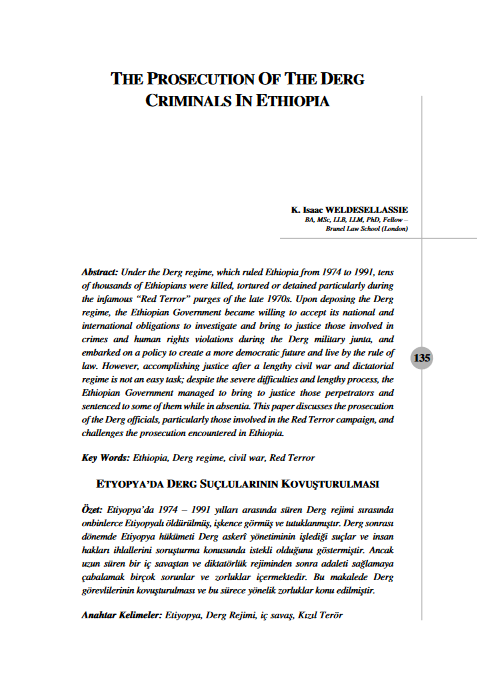
Salih Işık BORA*
Trainee at AVİM
In the 16th century, one of the main drivers behind the Europeans’ quest to find sea routes to India which triggered the discovery of the Americas, was the reality that the Ottoman Empire limited[1] their access to the Silk Road trade system. The One Belt One Road initiative partly arises from a similar concern. China facing the prospect of an American denial to its access to maritime commerce, notably illustrated in the US military report from 2014 named «Deterring the Dragon »[2] is opting for a comparable solution for guaranteeing its access to trade. The US navy has the capabilities to fully block China’s access to maritime trade[3] and the report suggests that in a conflict scenario it will do so. 96% of Chinese products reach European and developing markets through sea routes[4]. The same is valid for China’s oil imports. Notably, China is dependent on the strategic Malacca strait and this was a major reason for making claims in the South China Sea. In this respect, the answer for China is not the discovery of a new route but the revival of an ancient one: the Silk Road.
It has been announced by President Xi Jinping in 2013 as the key policy of his term, is seeking to revitalise the trading routes across the Eurasian continent by building infrastructure on a massive scale. The Silk Road is a recurring reference point of the initiative as the land based part of it is called the «Silk Road Economic Belt» while its sea based component is named « the Maritime Silk Road ».
Apart from the previously explained geostrategic goal of reducing dependency to sea routes, the motivation behind this unprecedentedly large initiative, estimated to contain a total worth of up to 4 trillion dollars[5] (compared to 130 billion for the Marshall plan) of investments, is China’s internal politics and governance. There is a pressing need to develop its impoverished western provinces, export surplus production and reduce the politically menacing increasing inequalities between its coastal areas and the rest of the country, unable to benefit from this maritime trade[6]. The new continental trade is expected to stimulate regions in economic distress like Xinjiang. The Chinese approach is that this project is not geopolitical and will be a « win-win » for all the parties involved and this is true to a certain extent. Many countries could obtain benefits from the New Silk Road initiative. In fact, except the United States and Japan, all the major countries that have a presence in Eurasia are participating in it, including European states. Even though China’s principal goal is not do so, this initiative will inevitably contribute to a geopolitical shift and benefit some countries more than others. The gap between Western countries currently controlling and as a result benefiting from the prominence of maritime trade and Eurasian states marginalised in the current global economy is progressively going to narrow.
From an historical point of view, the hegemony of maritime trade and as a result the dominance of the world by coastal metropolises is an anomaly. As the Central Asia historian Christopher Beckwith points out[7], in the 16th century, Mumbai was a fishing village and Kolkata was not even found yet by the British while Central Asian cities like Samarkand and Merv were prospering. Atlantic Europe was not the core of the global trade but was merely its western end. However, the network called the « Littoral System » by Christopher Beckwith emerged during the Age of Discovery[8]. As a result, the maritime empires founded successively by the Portuguese, the Dutch, and the British could reap most the benefits of global trade. Since the Second World War, America is the western power that maintains control of these global sea lanes. The 200 years of Western hegemony was a mainly maritime one. As Robert Kaplan explains in his book Asia’s Cauldron, even though the gap is narrowing, China will not have the means to rival this prominence of the US navy in the following decades if ever. The One Road One Belt project could be a game changer because the revival of the Silk Road trade network could enable land-based trade and favour China, a continental power. Harold Mackinder, in the Geographical Pivot of History argued that with the development of railways such a continental power could unite Eurasia and threaten the dominant maritime empire, at the time referring to the British. Although, Mackinder has a military point of view and One Belt One Road is mostly a commercial project (even though there are concerns that China will seek to increase its military power projection), the Chinese ambassador to the United Kingdom evoked this this theory in a letter published by the Financial Times, illustrating its ongoing presence in the minds of people, even perhaps of decision makers.
Just as countries on the Atlantic Coast of Europe benefited from the Age of Discovery, certain countries (besides China) could move to a more favourable position. Among the countries that could see its importance increasing is Turkey due to its strategic location, at the end of both the Southern terrestrial road and the maritime road towards Europe. Originally, the Silk Road was crucially important in the History of both Anatolia and the Eastern Mediterranean. Many cities in Turkish territory are situated on the Historical Silk Road. While it is not yet a prominent agenda in the media, the country’s leadership is increasingly involved in this Chinese initiative notably as shown during President Erdogan’s appearance at the project’s first summit that took place in Beijing in 15th May 2017, along with Xi Jinping and Vladimir Putin.
This paper will aim to examine Turkish perspectives on the One Belt One Road project. First of all, this project is an opportunity for Turkey (I). However, multiple challenges and risks still need to be addressed for the One Belt One Road project to yield benefits (II).
- The One Belt One Road Project: An Opportunity for Turkey
It is necessary to stress the fact that the One Road One Belt project provides many opportunities to Turkey. Currently, it is a peripheral country located at the easternmost extremity of a west-centric trade system (1). This position contributes to the unbalanced development of its western and eastern provinces (2). Additionally, Turkey’s southeastern neighbourhood is unstable and this reality is negatively affecting the country’s economic potential. The One Road One Belt project seems to carry promise to alleviate some of the factors linked to these security issues (3).
- Turkey as a Peripheral Country
The current tendency of Turkish trade is towards diversification and improved exchanges with non-Western countries. In fact, the proportion diminished since the end of the Cold War. Notably trade volume with the Iraq, China, Iran and the South Caucasus increased. While it used to be more than 55% in 1999, the European Union still concentrates nearly 40% of Turkey’s trade[9]. On the other hand, the EU still accounts for 75% of Foreign Direct Investment to Turkey according to the same European Parliament report. Currently the two main trade axes are the Transatlantic and Transpacific ones having the United States at its centre. Turkey is merely a marginal element within the transatlantic part of this network. The TTIP project which aimed to create a free-trade zone between the United States and the European Union, also put Turkey in a disadvantage. In fact, the country, as a part of the European Customs Union would have to open its market to American goods while not being able to access the American consumer market under the same terms. The OBOR initiative is an opportunity for Turkey to change its peripheral status and to move to a more central position in worldwide trade. Various studies suggest that it will reduce the export times for products across Eurasia and thus vitalise trade. In fact the average exporting time is 8 days within the G7 group of developed economies, while among the OBOR countries it takes 50 days[10]. The reduction of this exporting time, will lead to higher trade intensities[11]. Turkey, being part of the customs union with the EU is in a good position to be the entry point to European markets for China. Asides from logistics, for political reasons, both China and Europe could prefer to choose this Turkish route over the Russian Eurasian Land Bridge. In the medium to long term, Chinese-Russian rivalry could increase substantially because of issues such as the Chinese migration to Siberia and competing influences in Central Asia. In the shorter term, the existing sanctions by western countries towards Russia and the tensions linked to the Russian annexation of Crimea are factors that could push European countries to opt for the Turkish route for obtaining Chinese products.
Aside from this land based « Silk road Economic Belt », the One Belt One Road project also contains the « Maritime Silk Road ». Turkey didn’t have the shipping capacity to become the major hub for this maritime route traversing the Indian Ocean towards the Eastern Mediterranean via the Red Sea. China opted for the Piraeus port in Greece as the principal western extremity of this maritime trade network, as COSTCO, the Chinese state owned shipping firm bought controlling shares of the port. Turkish ports, currently being expanded, are expected to play a complementary role in this maritime Silk Road.
As a consequence, Turkey’s position would shift from the margin of west-centric trade network to a more central position. This will have a favourable impact. According to a 2016 report, the OBOR initiative is expected to contribute to Turkey’s GDP around between 0.18 to 0.22% per year[12]. Moreover, besides the impact on general welfare, being a peripheral country has further negative effects on the development pattern.
- Addressing Regional Disparities with The OBOR Project
Turkey’s peripheral role in this west-centric system is contributing to the unbalanced development of the country’s regions. The infrastructure is unevenly developed in the country as there is little incentive to build developed infrastructure than in the western provinces, well connected to the global economy and facing fewer security obstacles. Regions such as the Aegean, Marmara and Greater Istanbul regions, trading with Europe are prospering while the Eastern parts remain underdeveloped[13]. Among the negative effects of this structure, is the unbalanced urban growth in Istanbul, gradually turning to a megalopolis spending to encompass other surrounding cities such as Kocaeli and Tekirdag. Anatolian residents look to migrate to this region to take part in economic activities, mostly absent from their regions. 25 percent of Turkey’s population is still working in the agricultural sector[14] and this migration towards the Istanbul area is likely to continue further. Developing other, notably eastern provinces is essential. This is in a way, comparable to China’s divide between coastal areas and the inland. The One Belt One Road initiative could address this issue of unbalanced development as the construction of infrastructure will provide incentives to look eastwards. The investment and economic opportunities in these impoverished eastern regions could increase as they would take part in an emerging trade network. The planned Trans-anatolian high speed rail could contribute to their integration to the global economy. Cities such as Sivas and Erzurum, are on this railway and could become transit hubs on the New Silk road as they were within the old one.
During the initial phases of the project, it will mostly serve to get Chinese products to European markets, currently absorbing 16% of Chinese exports[15], the largest share of any economic entity after the United States (18%). However, the share of exports in China’s GDP has been decreasing and is expected to continue in this direction; after peaking at 37% in 2008, it decreased to 21% in 2015[16]. The Eurasian market will not necessarily be oversaturated with Chinese goods, especially not in the middle to long term. New exporting opportunities are also expected to appear increasingly. The eastern provinces could find themselves in an advantageous position not only as transit hubs but also as production centres, as the average wages are lower, the labor force is younger and companies seeking to export to expanding eastern markets could relocate there, especially considering that this initiative could be expected to alleviate security risks in the region.
- A Commercial Project Wielding Security Benefits
Currently, there is an axis of instability that extends from West Africa to Central Asia, it negatively impacts economic prospects and quality of life in Turkey. Religious extremist terror groups are present in the Middle East and there are concerns that they are gaining ground in Central Asia. The spillover of these conflicts also generates vast numbers of refugees, in addition to economic migrants hoping to reach Europe via Turkey. A recent study by the Stanford economist Matthew Jackson suggests that trade agreements and alliances are more likely to reduce conflict and insecurity than balance of power politics or security based alliances[17]. Whether this thesis is universally valid or not, developmental approaches are evidently likelier to wield results than forceful institution building, notably demonstrated with the American interventions in Iraq and Afghanistan. Asides from empirical research, History suggests that the revitalisation of the Silk Road trade network could improve cultural, intellectual and economic life in Central Asia and the Middle East. In fact, the downfall of the continental trade system arguably played a central role in pushing these regions to their current economic, social and political crisis as they previously were prospering within the world trade network.
The New Silk Road initiative is therefore a promising project to alleviate security risks in the region whether it is conflict or terrorism[18].
In conclusion we could see that the OBOR initiative is a promising opportunity for Turkey. The country could be emancipated from its peripheral role in the west-centric trade system by looking for opportunities eastwards (1). As a result, poorer regions within Turkey could be more integrated to the global economy (2). Moreover, the One Belt One Road project is promising for security and stability (3). However, another question one needs to ask is how the Turkish foreign policy could contribute to the creation of an international environment that will enable the success of this initiative.
- Challenges and Risks Of The OBOR Project For Turkey: Adapting To A Changing Geopolitical Landscape
In fact, the One Belt One Road project is going to significantly alter the geopolitical landscape of Eurasia. This paper will argue that to fully obtain the benefits of the One Belt One Road initiative, the Turkish foreign policy will need to play an active role and adapt to these changing geopolitical dynamics. This role will need to concentrate on two priorities: avoiding conflict with Iran (1) and deepening commercial and political ties to the European Union (2).
- Avoiding Conflict with Iran
Cooperating with Iran is a key factor for the success of the One Belt One Road project. The southern route of the New Silk Road might go to Turkey through Iran. As it has been suggested in the previous section of this paper China will seek to prioritise the southern route of the OBOR network. In his 2016 visit to Iran, Xi Jinping revealed the magnitude of Iran’s role within the OBOR initiative by expressing his desire to increase bilateral trade to 600 billion dollars in 10 years[19]. The partnership between the two countries also has strategic value, as China sees Iran as its natural ally in the Middle East for limiting US influence. These China-Iran ties are critical for the success of the OBOR initiative and the Chinese government will be expected to behave accordingly. Logically, Turkey-Iran ties are also crucial as these two countries will jointly form a bridge between Central and East Asia and Europe.
However, this segment of the proposed road seems to be its most vulnerable part. Currently, there are attempts to isolate Iran in the region by the United States and the Gulf states. While, unlike the previous decade, a US military intervention to Iran seems to be off the table, the security situation is precarious. The ongoing adversity between Saudi Arabia and Iran is threatening the region’s stability. Republican administrations whether its Bush’s or Trump’s seek to contain the Iranian regime and to precipitate regime change if possible. A 2012 report by the neoconservative think tank RAND corporation advocates for taking punitive action towards Chinese companies that deal with Iran in the fields of energy and infrastructure;
“If carrots are out, what about sticks? It seems reasonable to think that the United States might consider the use of punitive measures against China if positive inducements, which are mostly politically unpalatable, appear unlikely to succeed. This would include sanctions against Chinese defense and energy firms conducting business with Iran.”[20]
Needless, to say, this policy is absolutely incompatible with the success of the OBOR initiative. The US Republican and Saudi-led efforts to undermine Iran are not likely to prevent this rise but only to further destabilise the region, rendering the Silk Road initiative difficult.
The counterproductive results of this approach are increasingly realised by decision makers in the West. During the Obama administration, the European states appeared willing to lift sanctions to Iran and the French oil company Total recently signed a 4 billion contract with the country. Europe needs to diversify its hydrocarbon sources and Iran is clearly a candidate. Turkey should seek to become the transit route for this potential pipeline. The opportunities of a rapprochement with Iran are obvious to western business circles. Recently Boeing signed a 3 billion deal to sell airplanes to Iran. On the other hand, European states and public opinion manifested willingness to reconcile with Iran due to its struggle against the Islamic State and because of a growing lack of trust to Gulf monarchies, blamed for propagating religious extremism. Europe is mostly reluctant because of US pressure but a Democrat administration in the United States could provide an opportunity for such a rapprochement as Obama’s nuclear deal illustrated. On the other hand, Hasan Rouhani’s electoral success points to the reality that Iran’s population is increasingly inclined towards integration to the global economy and normalisation with the West.
Until now, Turkey compartmentalised its relationship with Iran to two distinct commercial and geopolitical spheres. The last 15 years, saw an increase of trade with Iran and the rationalisation of the relations between the two countries. However, geopolitically they found themselves in opposing sides, notably during the Syrian conflict. Until the current Qatar crisis, Turkey mostly favoured Saudi Arabia over Iran in the ongoing proxy conflict and this approach is not sustainable. In any case, engagement with Iran isn’t profitable for Turkey, especially if the OBOR initiative takes place.
In the long term, the One Belt One Road initiative participates in the long time trend of a rising Iran. Preventing this rise, even if possible will be prohibitively costly. Eventually, western actors like the United States and Europe will renounce from doing so. For Turkey’s case, Iran’s integration to the global economy could be beneficial. Turkey needs to anticipate this and establish multidimensional cooperation with Iran early on. Conflict with Iran is to be avoided and Turkey’s foreign policy should prioritise to do so.
One should also underline that, Turkey’s position between Europe and Iran within the New Silk Road network can be put to use.
- Strengthening Ties to Europe
Apart from cooperation with Iran, a key factor that would guarantee the success of Turkey within the New Silk Road is its proximity to Europe.
European countries are crucial for the One Road One Belt initiative as the main motivation for the project was exporting Chinese goods to their markets. Turkey is the entry point of the southern route towards Europe. Currently the only existing railway link between China and Europe is the northern route transiting through Kazakhstan and Russia and it concentrates nearly 100% of the traffic[21]. However, as the first section of this paper showed, it is likely that the southern route through Turkey will become as important if not more. In this regard, Turkey is more advantageous than Russia as it has a much less antagonistic relationship with Europe. Currently, the EU is still imposing sanctions on Russia and this is unlikely to change unless there is a major shift of policy. Turkey is the easternmost country in the EU customs union, which makes it a potential transportation hub in the New Silk Road initiative. However, for this potential to be realised, Turkey needs to maintain and even strengthen its ties to Europe. The emerging partnership with China and possibly with Iran should not signify distancing from Europe. In fact, these new partnerships will be complementary to the European one. Turkey’s goal should be to consolidate its central position in this new trade network with a foreign policy, aiming to maintain balanced ties with different regions. These ties are vital for the development of soft infrastructure, notably with the modernisation of the customs union with Europe. In fact, this agreement negotiated in 1995 is out of sync with today’s needs[22] and its modernisation could yield benefits for Turkey’s role in the OBOR project.
Turkey’s full membership to the European Union and the Schengen zone is a very distant prospect if it is ever going to be possible. But the current tendency of the European Union is towards different levels of integration. There is widespread criticism of the EU’s governance, most notably of the 2008 recession and the following sovereign debt crisis. Among the proposals was a « Eurozone parliament » suggested by the economist and economic consultant for the french Socialist Party Thomas Piketty. Since Emmanuel Macron’s election in May, France and Germany have been dialoguing for the establishment of such a Parliament. In fact, for the founding core members of Europe, the need for further integration is obvious since the 2008 crisis but it would be politically impossible to get all members on board. In April 2017, after a summit at Versailles between the leaders of Germany, France, Spain and Italy it was announced that their policy was going to be one of a « Europe with multiple speeds »[23]. Depending on the outcome of the deal negotiated with Great Britain, a new layer of cooperation, outside the European Union could emerge as Brexit was among the developments that led to the discussion of such a multispeed Europe. Many suggested that the UK, despite leaving the EU, should join some form of European supranational structure. On the other hand, the entry of Eastern European countries to the Schengen zone and the Euro is still problematic. As shown by the Greek crisis, unless the EU evolves towards a federal state with fiscal transfers, countries with different levels of development can hardly coexist within the same currency area. The core countries of the Union such as France, Germany and Italy may have interests to pursue further integration. While the founding members seek further integration, the Visegrad Group (Czech Republic, Poland, Slovakia, Hungary) also coordinate their foreign policy and their cooperation may evolve further. The structure of the EU could evolve to a more multilayered form. These developments signify that Turkey does not need to enter the European Union to have deeper ties with it. It could integrate the Union’s outer circle along countries like Britain.
One should also stress the fact that the OBOR initiative is going to expand China’s influence greatly and integration to Europe can counterbalance this influence. Due to its sheer size and level of growth, China will inevitably be advantageous on the bargaining table for trade deals and tariffs. However, the European Union as a whole increases the negotiation strength of the member states. It is the second largest consumer market in the world and would have strong leverage during such negotiations. Despite the constant criticism, the European Union enabled the member countries to inflict billion dollar fines to companies such as Microsoft and Google for their unfair practises. Without the leverage of access to a 500 million strong developed market, this would never be possible and the European countries would be condemned to be subjected to unfair trade practises. The same is true for Europe’s commercial links with China and Chinese companies. Turkey, while seeking benefits as an individual country should also integrate Europe to the furthest possible extent to obtain better terms for conducting trade. For obtaining benefits from the OBOR initiative, strong partnership with Europe is therefore a precondition for Turkey. Along with immediate cooperation, membership should be a long term goal.
* Salih Işık Bora continues his studies at the University College of Sciences Po Paris and London School of Economics.
[1] Ian Morris, Why the West Rules—for Now: The Patterns of History and what they reveal about the Future (Picador, 2010).
[2] Victor Vescovo, Deterring the Dragon… From(Under) the Sea (US Naval institute, 2014). The author examines the US navy’s possibility to blockade the Chinese coastline incase of military conflict.
[3] “The Geopolitics of China: a Great Power enclosed," Stratfor, last modified March 25, 2012, https://worldview.stratfor.com/article/geopolitics-china-great-power-enclosed
[4] “Land Transport Options Between Europe and Asia: Commercial Feasibility Study,” (U.S. Chamber of Commerce and Rambøll Danmark, 2006).
[5] “Our bulldozers, our rules,” The Economist, last modified July 2, 2016, https://www.economist.com/news/china/21701505-chinas-foreign-policy-could-reshape-good-part-world-economy-our-bulldozers-our-rules
[6] Shannon Tiezzi, "China’s prescription for troubled Xinjiang: The New Silk Road," The Diplomat, November 19, 2014.
[7] Christopher Beckwith, Empires of the Silk Road (Princeton University Press; 2009).
[8] Christopher Beckwith, Empires of the Silk Road (Princeton University Press; 2009).
[9] European Parliament Directorate General for external policies, “Bringing EU-Turkey trade and investment relations up to date" (European Parliament: 2016).
[10] James Villafuerte, Erwin Corong, Juzhong Zhuang, "The One Road One Belt Initiative: impact on trade and growth," (paper presented at the 19th Annual Conference on Global Economic analysis, June 15-17, 2016)
[11] Murat Seker, “Trade performance in Eastern Europe and Central Asia” (Enterprise note no.19; World Bank, 2010).
[12] James Villafuerte, Erwin Corong, Juzhong Zhuang, "The One Road One Belt Initiative: impact on trade and growth," (paper presented at the 19th Annual Conference on Global Economic analysis, June 15-17, 2016)
[13] “Turkey’s Geographic Challenge,” Stratfor, last modified March 27, 2013, https://worldview.stratfor.com/article/turkeys-geographic-challenge ,
[14] Turkiye Istatistik Kurumu.
[15] Trading Economics.
[16] World Bank.
[17] Matthew O. Jackson, “Can Trade Prevent War?,” Insights by Stanford Business, last modified: May 28, 2014, https://www.gsb.stanford.edu/insights/matthew-o-jackson-can-trade-prevent-war.
[18] Christopher Beckwith, Empires of the Silk Road (Princeton University Press; 2009).
[19] Michael Tanchum, “China’s One Belt One Road project reshapes Mideast,” Jerusalem Post, last modified January 24, 2017, http://www.jpost.com/Opinion/Chinas-One-Belt-One-Road-reshapes-Mideast-479492.
[20] “China and Iran: Economic political and military relations,” (RAND corporation Centre for Middle East Public Policy: 2012).
[21] Onur Uysal, “The Iron Silk Road: How will Turkey be involved,” Caucasus International (6), No:1, (2016).
[22] European Parliament Directorate General for external policies, “Bringing EU-Turkey trade and investment relations up to date" (European Parliament: 2016).
[23] Edouard Pfimlin, “Sommet de Versailles: pour une UE à plusieurs vitesses,” Le Monde, last modified: April 7, 2017, http://www.lemonde.fr/europe/article/2017/03/07/sommet-de-versailles-pour-une-ue-a-plusieurs-vitesses_5090248_3214.html
© 2009-2025 Center for Eurasian Studies (AVİM) All Rights Reserved
-
Sajida Wasim - OBOR will balance declining western markets
West is aging fast, so western markets will shrink. In US, majority of poor non-white students are already in public schools. Upward mobility among non-whites is very low because of residential and school segregation. New Silk Road will help connectivity with countries with booming populations and help them to also provide more jobs for their young workforce. 01.12.2017
-
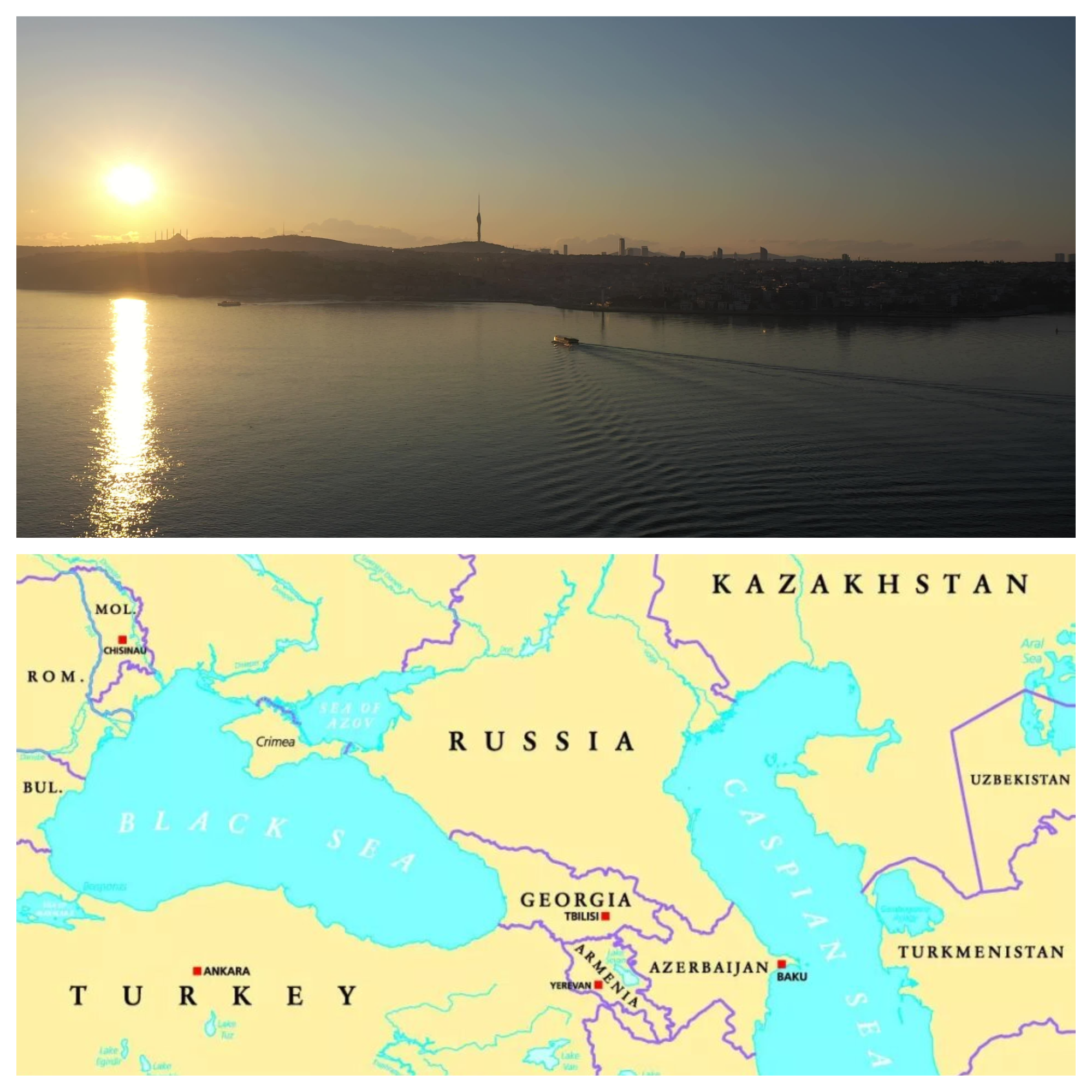 AT THE CROSSROADS: TÜRKİYE AND THE BATTLE FOR BLACK SEA ORDER
AT THE CROSSROADS: TÜRKİYE AND THE BATTLE FOR BLACK SEA ORDER
Teoman Ertuğrul TULUN 21.10.2025 -
D.L. PHILLIPS’S DIPLOMATIC HISTORY OF THE TURKEY-ARMENIA PROTOCOLS 3
Ömer Engin LÜTEM 29.03.2012 -
 WE ARE LOOKING FORWARD TO A WORLD FREE FROM THE CRUEL AND ODIOUS CRIME OF GENOCIDE
WE ARE LOOKING FORWARD TO A WORLD FREE FROM THE CRUEL AND ODIOUS CRIME OF GENOCIDE
AVİM 18.12.2017 -
 NEO – NAZISM IS GAINING STRENGTH IN THE NORDIC COUNTRIES
NEO – NAZISM IS GAINING STRENGTH IN THE NORDIC COUNTRIES
Hazel ÇAĞAN ELBİR 20.09.2018 -
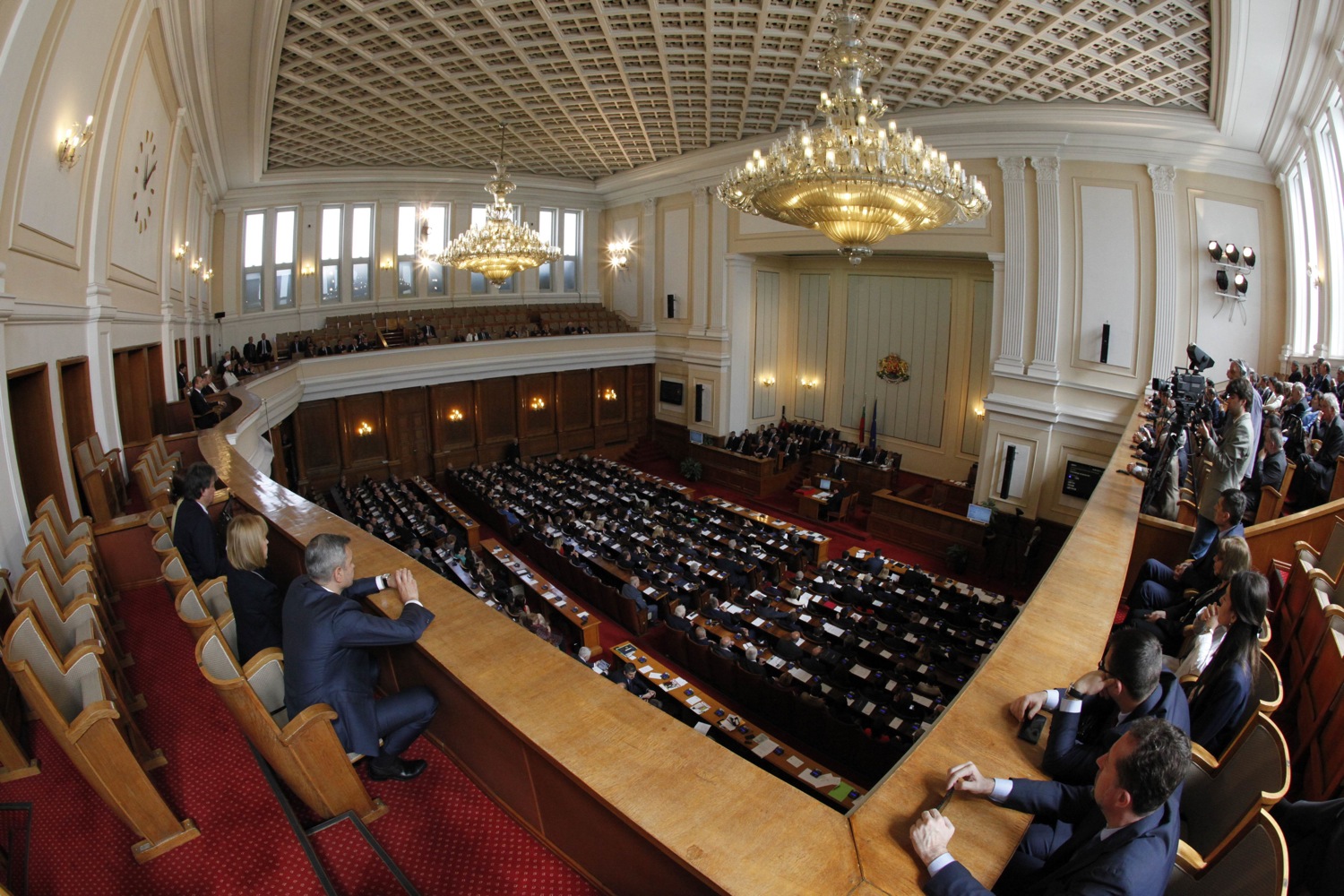 THE NECESSITY FOR A GOVERNMENT THAT CAN PULL BULGARIA OUT OF CRISIS
THE NECESSITY FOR A GOVERNMENT THAT CAN PULL BULGARIA OUT OF CRISIS
Gözde KILIÇ YAŞIN 29.05.2023
-
25.01.2016
THE ARMENIAN QUESTION - BASIC KNOWLEDGE AND DOCUMENTATION -
12.06.2024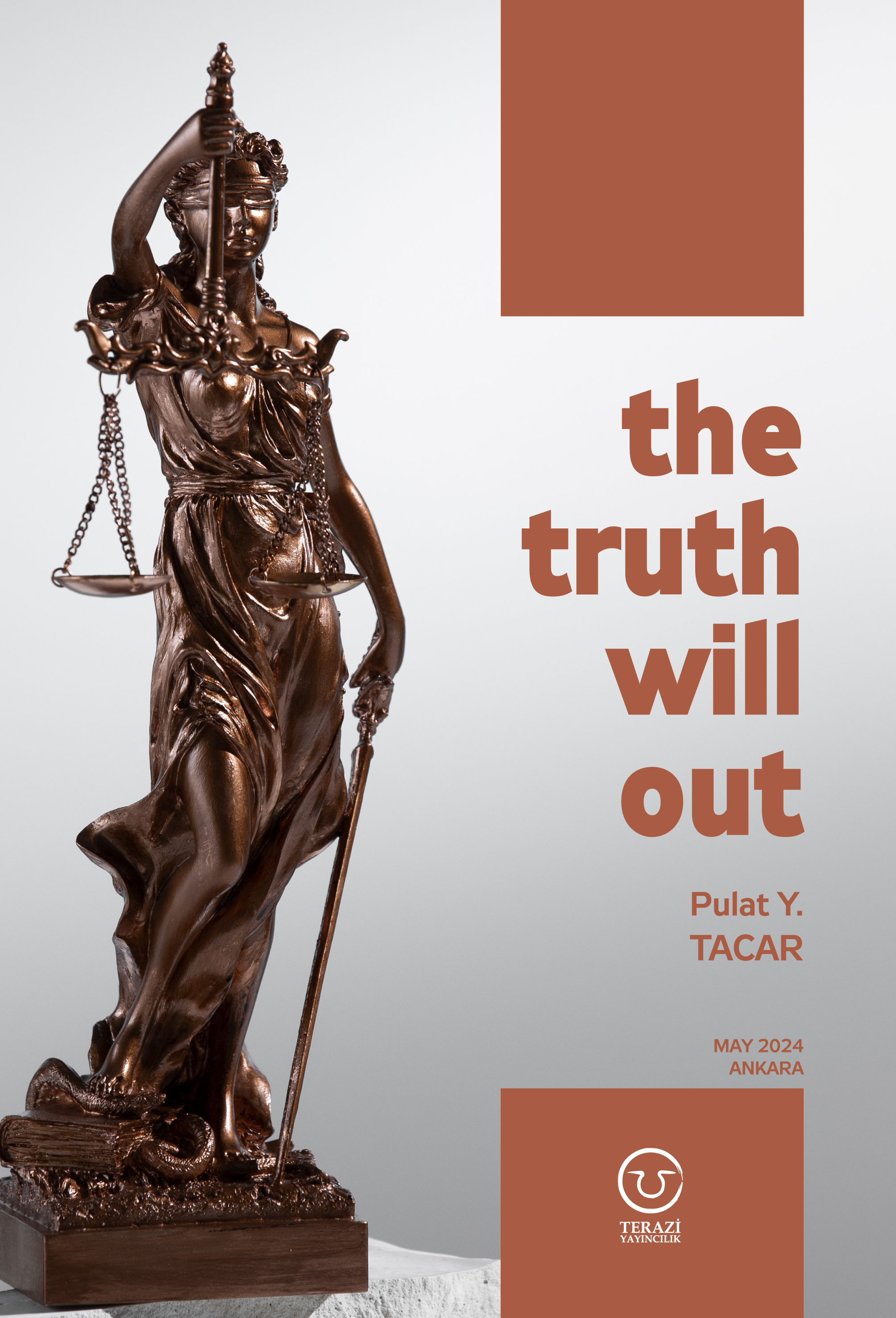
THE TRUTH WILL OUT -
27.03.2023
RADİKAL ERMENİ UNSURLARCA GERÇEKLEŞTİRİLEN MEZALİMLER VE VANDALİZM -
17.03.2023
PATRIOTISM PERVERTED -
23.02.2023
MEN ARE LIKE THAT -
03.02.2023
BAKÜ-TİFLİS-CEYHAN BORU HATTININ YAŞANAN TARİHİ -
16.12.2022
INTERNATIONAL SCHOLARS ON THE EVENTS OF 1915 -
07.12.2022
FAKE PHOTOS AND THE ARMENIAN PROPAGANDA -
07.12.2022
ERMENİ PROPAGANDASI VE SAHTE RESİMLER -
01.01.2022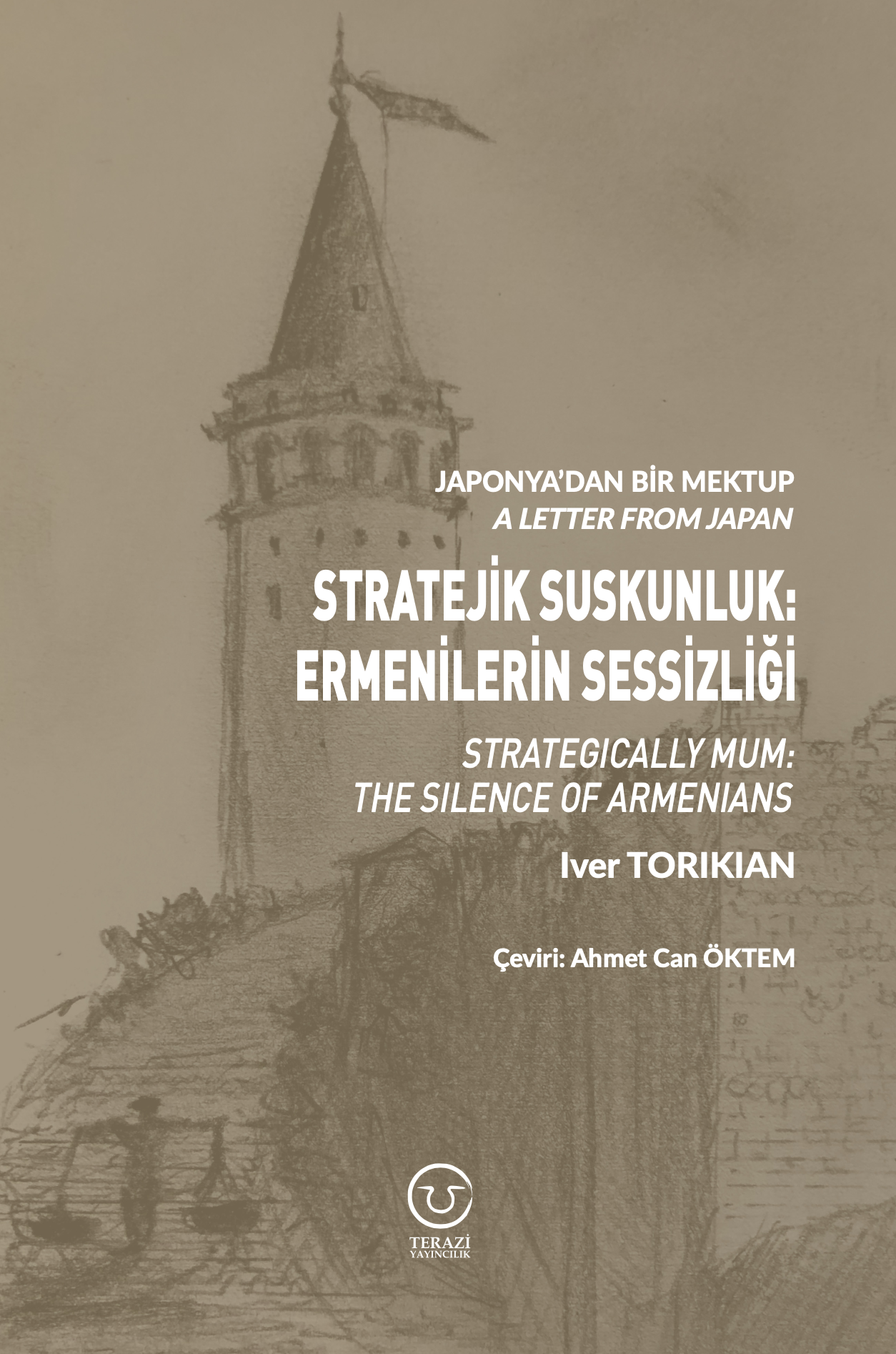
A Letter From Japan - Strategically Mum: The Silence of the Armenians -
01.01.2022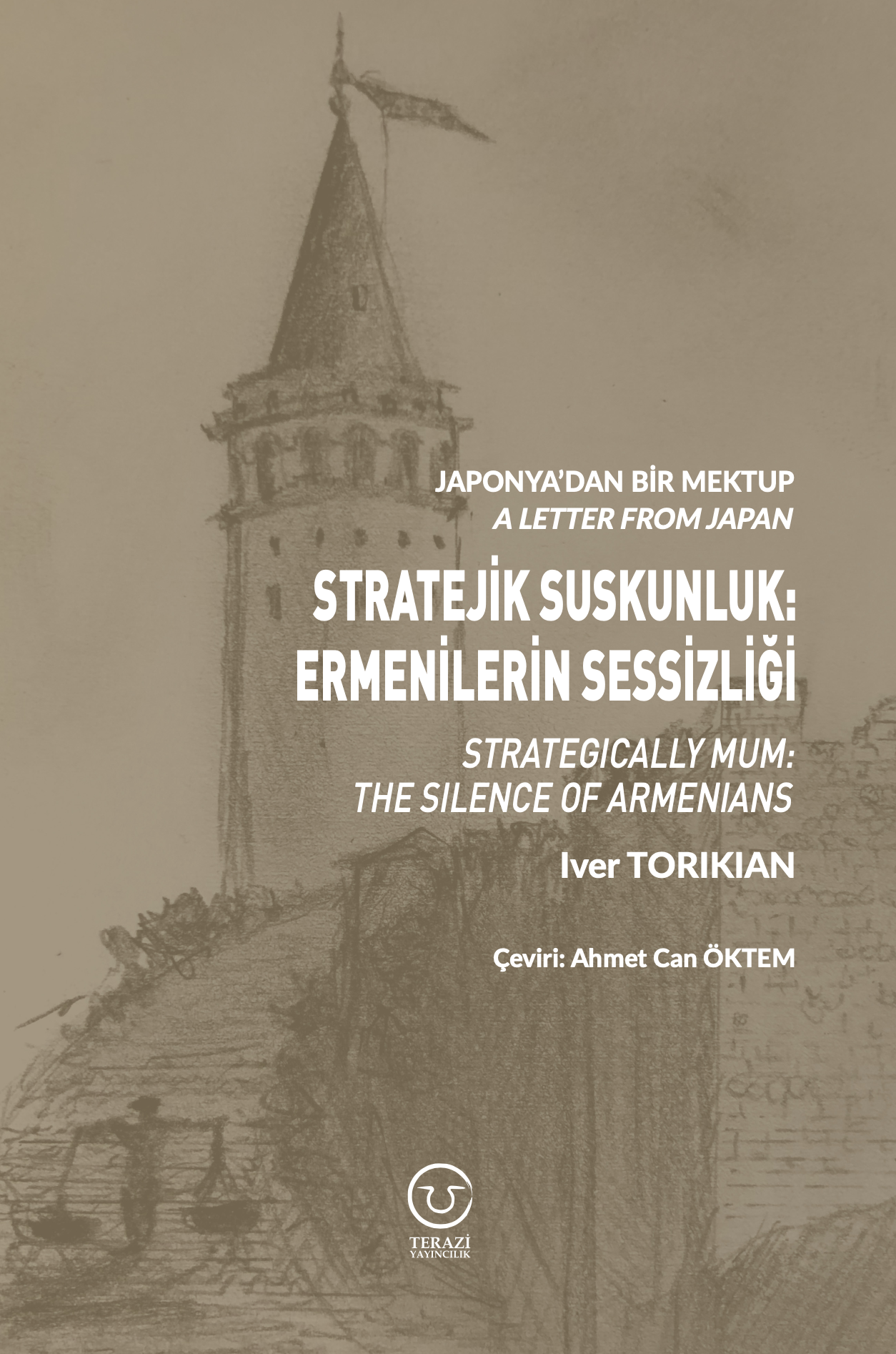
Japonya'dan Bir Mektup - Stratejik Suskunluk: Ermenilerin Sessizliği -
03.06.2020
Anastas Mikoyan: Confessions of an Armenian Bolshevik -
08.04.2020
Sovyet Sonrası Ukrayna’da Devlet, Toplum ve Siyaset - Değişen Dinamikler, Dönüşen Kimlikler -
12.06.2018
Ermeni Sorunuyla İlgili İngiliz Belgeleri (1912-1923) - British Documents on Armenian Question (1912-1923) -
02.12.2016
Turkish-Russian Academics: A Historical Study on the Caucasus -
01.07.2016
Gürcistan'daki Müslüman Topluluklar: Azınlık Hakları, Kimlik, Siyaset -
10.03.2016
Armenian Diaspora: Diaspora, State and the Imagination of the Republic of Armenia -
24.01.2016
ERMENİ SORUNU - TEMEL BİLGİ VE BELGELER (2. BASKI)
-
AVİM Conference Hall 24.01.2023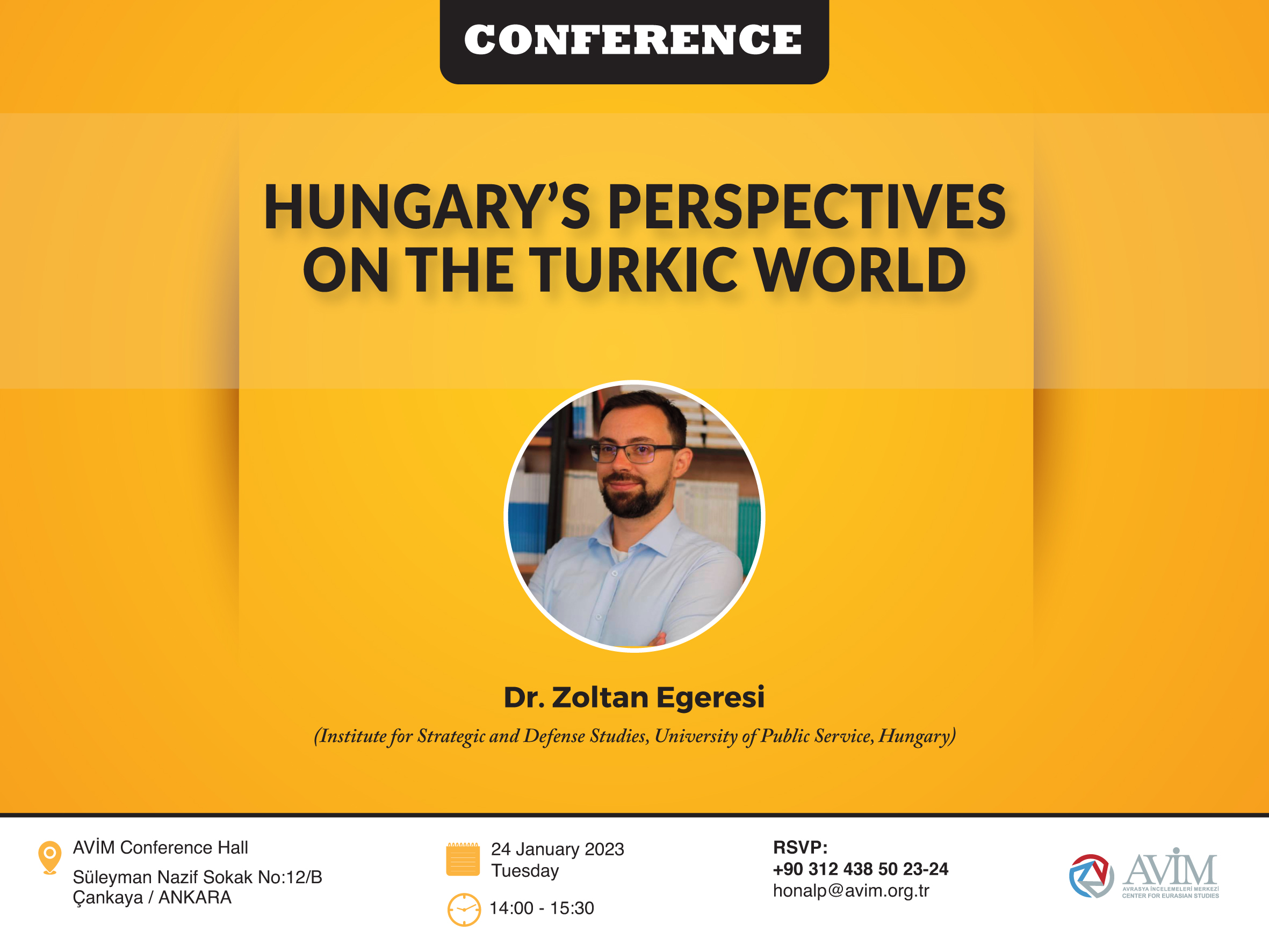
CONFERENCE TITLED “HUNGARY’S PERSPECTIVES ON THE TURKIC WORLD"








